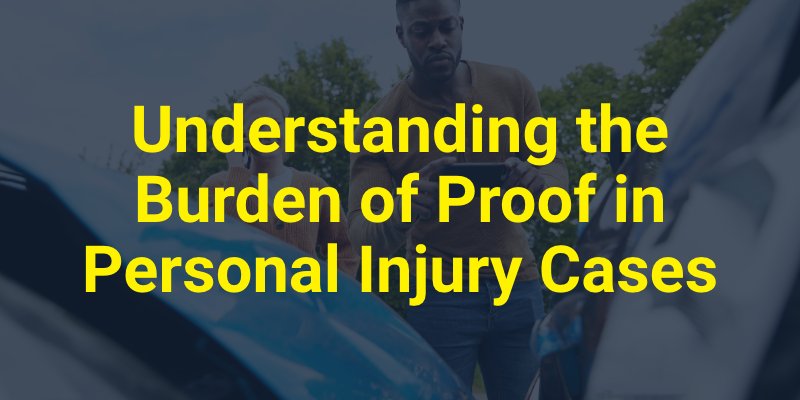The term “burden of proof” refers to the obligation placed on a party in a legal case to prove or disprove a disputed fact. In criminal cases, this burden typically falls upon the prosecutor’s office which needs to prove the defendant’s guilt beyond reasonable doubt.
For civil matters like Phoenix personal injury lawsuits, the plaintiff (the injured party bringing the lawsuit) carries the initial burden and must put forth evidence to prove that the defendant was at fault. In these cases, the standard of proof is lower than in criminal cases and is known as a preponderance of the evidence.

In a civil claim, fulfilling the burden of proof is a task that lies squarely on your shoulders as the plaintiff. First, it’s vital for you to understand what “preponderance of the evidence” means – this is predominantly what determines success in civil litigation. Essentially, it implies that based on all evidence presented by both sides, if there’s more than 50% chance that your version of events happened as claimed, then you’ve met this threshold.
In most personal injury claims, like car accidents, the fundamental task is to prove negligence. This essentially means demonstrating that the party you’re suing (the defendant) failed in their legal duty to act with reasonable care or safety and that this failure led directly to your injuries.
Negligence consists of four main elements: Duty, Breach, Causation, and Damages.
Duty: First, acknowledgment must be made of a duty owed by the defendant towards you – for instance if you were interacting as doctor-patient or driver-passenger, there exist standard regulations guiding behavior in these scenarios.
Breach: The next step involves showing how the defendant deviated from this established duty. For example, if a physician administers the wrong medication, they’ve likely deviated from their obligation to provide sound medical treatment.
Causation: You must then illustrate causation – that the defendant’s breach of duty directly resulted in harm to you. This involves drawing clear links between the defendant’s negligent actions and your injuries.
Damages: Finally, actual damage or harm must be proven, which could take the form of medical bills, lost earnings, or even emotional distress experienced from trauma associated with the injury.
The evidence used in a civil claim can take several forms, most often including:
Documents: Documents serve as hard pieces of evidence and usually include contracts, emails, text messages, or any other written proof you have to back up your claims.
Witness Testimony: Witness testimonies are another key element. People who were present when the incident occurred or those with firsthand knowledge about it can provide powerful insight into your case.
Expert Opinions: Expert opinions are particularly valuable if you’re dealing with complex issues that require specialized understanding like medical malpractice or defective product cases where technical expertise is needed to make sense of the events involved.
Medical Records: Medical records are essential when bringing forth personal injury claims. They assist in establishing the cause, extent, and cost of injuries sustained, which significantly influences compensation amounts.
Ultimately, what’s most important is that all your evidence is reliable and able to withstand scrutiny from opposing counsel. If you need help with any type of personal injury claim, don’t hesitate to contact us to schedule a free consultation.